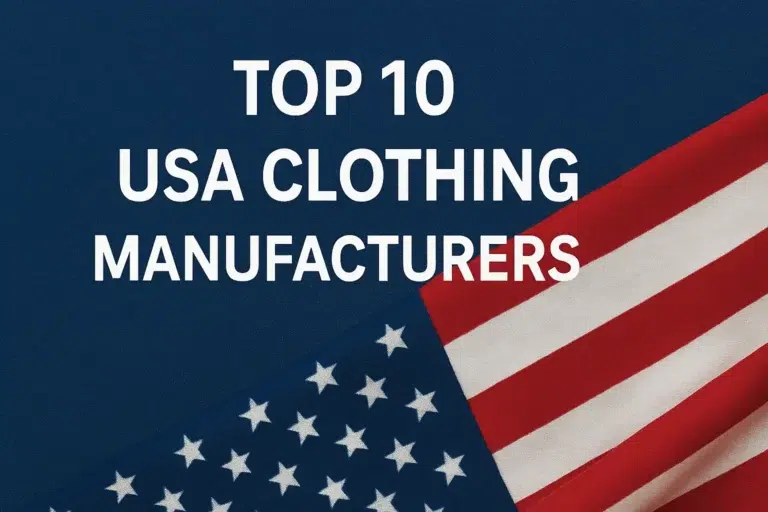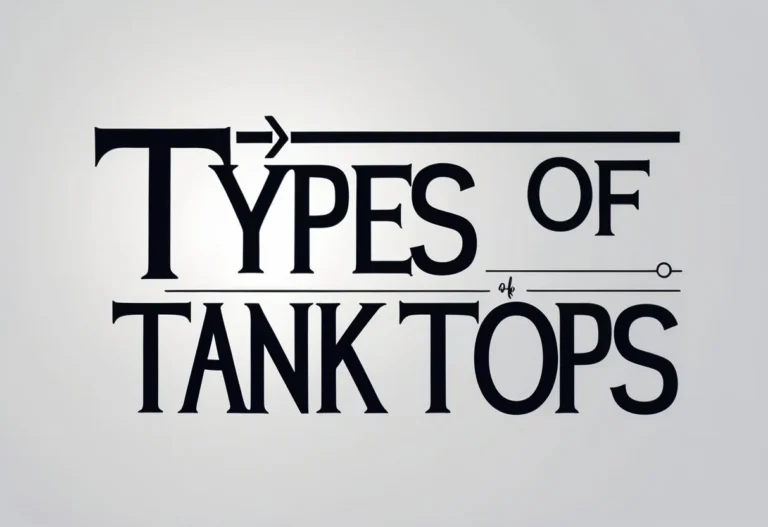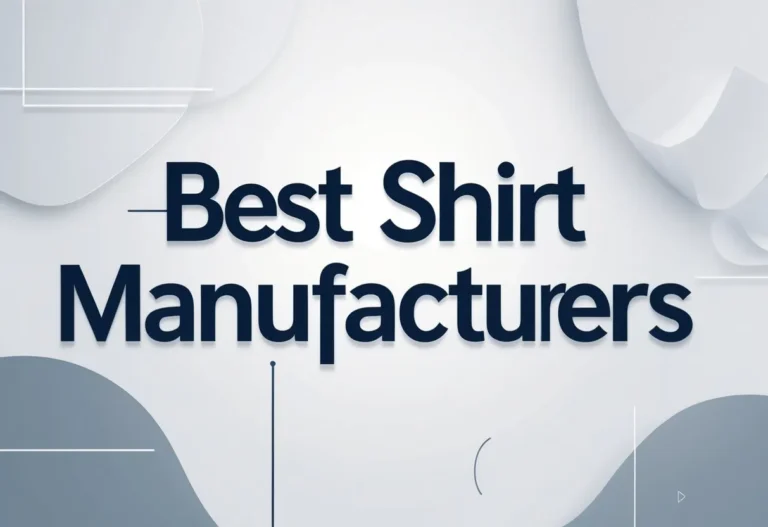How to Promote Your T-Shirt Business: Proven Growth Strategies
Promoting a t-shirt business requires more than just having great designs. It involves reaching the right audience and using effective marketing tools to make those designs visible and desirable. The key to success lies in combining smart digital marketing techniques like social media and SEO with a clear brand identity that connects with customers. So here you will get learn about How to Promote Your T-Shirt Business in detail.

Many t-shirt businesses grow by focusing on building relationships with their audience and using engaging content to draw attention. Using targeted ads, influencer partnerships, and creative campaigns helps increase sales and keeps the brand fresh in customers’ minds. Strong online presence paired with strategic offline efforts can boost visibility and create lasting loyalty.
Understanding who the customers are and where to find them is crucial in tailoring promotions that work. The most successful businesses continuously analyze their strategies and adapt based on what drives traffic and sales, ensuring long-term growth.
Key Takeaways
- Effective promotion starts with knowing and reaching the right customers.
- A distinct brand and strong online presence attract more buyers.
- Continuous improvement based on results helps sustain business growth.
Understanding Your Target Audience

Knowing who will buy your t-shirts is key to growing your business. This knowledge guides design choices, marketing efforts, and sales approaches. Gathering detailed information about your potential customers helps tailor strategies that meet their needs and preferences.
Conducting Effective Market Research

Market research provides data on who your customers are and what they want. This includes learning about their age, location, interests, and spending habits. Research methods include surveys, interviews, and analyzing competitors.
It also helps identify trends in the t-shirt industry and gaps in the market. For instance, a business might find a demand for eco-friendly materials or unique graphic designs. Understanding these trends allows the company to adjust offerings to attract its target market effectively.
Building Customer Personas
Customer personas are detailed profiles of ideal buyers. These personas include demographic details, shopping behaviors, and lifestyle choices. Creating them helps clarify who the business is selling to and why.
A persona might describe a 25-year-old artist who prefers bold, expressive designs and shops online. Another could be a corporate buyer looking for bulk custom t-shirts with logos. Personas focus marketing messages and product development on precise customer needs, improving engagement and sales.
Analyzing Customer Feedback
Customer feedback is vital for refining products and services. It reveals what works well and what needs improvement in both designs and the shopping experience. Gathering feedback can include reviews, surveys, and direct communication.
Analyzing this feedback helps spot repeating issues or popular features. For example, customers might request more size options or faster shipping. Addressing these points increases satisfaction and builds loyalty, which is important in a competitive t-shirt business.
Crafting a Unique Brand Identity

Creating a strong brand identity helps a t-shirt business stand out in a crowded market. It involves telling a clear story, designing a logo that sticks in people’s minds, and using consistent messages across all channels. This approach builds trust and makes the brand recognizable to customers.
Developing Your Brand Story
A brand story explains why the t-shirt business exists and what it values. It should reflect the inspiration behind the designs and the personality of the brand. This story helps connect with customers on a deeper level.
The story must be honest and relatable. It can highlight the founder’s journey, the brand’s mission, or the unique culture it represents. For example, a business focusing on eco-friendly shirts could share how it supports sustainability. This builds emotional ties and loyalty.
Brands should focus on what makes their t-shirts different from others. A compelling story guides marketing efforts and shapes customer expectations.
Designing a Memorable Logo
A logo is often the first thing customers notice. It needs to be simple, clear, and tied closely to the brand’s identity. Good logos work well on different platforms — from a website to a t-shirt tag.
Designers should choose colors and fonts that reflect the brand’s personality. For instance, a fun and youthful brand may use bright colors and playful fonts. A more serious or premium brand would pick classic, clean styles.
The logo should be versatile, scalable, and easy to remember. Strong logos make the brand more professional and recognizable in the t-shirt industry.
Building Consistent Brand Messaging
Consistency means using the same tone, style, and values in every communication. This includes social media, packaging, website content, and customer service. Consistency helps customers quickly identify the brand.
Messages should reinforce the brand’s core ideas. For example, if the brand stands for creativity and freedom, that should show in the words, visuals, and offers. Using branded slogans or taglines can support this.
A consistent message increases trust and helps the t-shirt business build a loyal audience over time. It also simplifies marketing by keeping the brand voice focused and clear.
Creating High-Quality and Unique T-Shirt Designs

High-quality and unique t-shirt designs are essential for standing out in a crowded market. Attention to detail in design, use of customization options, and understanding customer preferences all play key roles in creating products that attract and retain buyers.
Exploring Customization and Personalization Options
Offering customization and personalization makes t-shirts more appealing to customers. This includes allowing clients to add names, logos, or specific colors to designs.
Businesses often value bulk orders with custom logos and packaging, which strengthens relationships and encourages repeat sales. Personalized t-shirts create a sense of uniqueness that standard products lack.
Customization tools on websites can improve the buying experience. They let customers design or tweak shirts directly before purchase. This flexibility attracts diverse buyers, from individual consumers to business clients.
Responding to Trending Styles
Staying current with fashion and cultural trends is important for creating relevant t-shirt designs. Designers should monitor popular colors, slogans, and themes.
Incorporating trending topics or styles can increase sales by tapping into active audiences. For example, social media trends or viral topics can inspire timely, sought-after designs.
Balancing trend responsiveness with brand identity is key. Designs should still reflect the core brand message while appealing to what customers want now.
Gathering Input on T-Shirt Designs
Collecting feedback improves design quality and customer satisfaction. Businesses can use surveys, social media polls, or direct customer conversations to learn preferences.
Input helps identify popular designs and highlight features that need improvement. It also builds engagement and loyalty by making customers feel involved in the design process.
Regularly reviewing sales data and customer comments guides adjustments in the design lineup. This informed approach supports creating t-shirts that better match market demand.
Leveraging Social Media Marketing

Social media platforms offer precise tools to promote t-shirt businesses by reaching specific audiences. Effective use includes visual presentation, targeted ads, and engaging campaigns that increase brand visibility and drive sales. Each platform has unique features that can help businesses connect with customers and build a strong online presence.
Using Instagram to Showcase Your Products

Instagram is ideal for visually displaying t-shirt designs. High-quality photos and videos highlight product details and styling options. Businesses can create Stories and Reels to offer behind-the-scenes looks or show how shirts fit in real life.
Collaborating with influencers amplifies reach by tapping into engaged followers. Using user-generated content—pictures customers share wearing the t-shirts—builds trust and authenticity. Instagram’s Shopping feature allows users to buy directly, simplifying the sales process.
Frequent posting, relevant hashtags, and engagement with followers are key to maintaining visibility and growing the brand on this platform.
Promoting on Facebook for Targeted Reach
Facebook offers detailed targeting for paid ads, allowing businesses to reach specific age groups, interests, and locations. This makes it a strong choice for promoting t-shirts to both local and broader markets.
Running contests or giveaways on Facebook encourages interaction and sharing, which increases brand awareness. Creating a Facebook business page with customer reviews builds credibility.
Using Facebook Groups focused on fashion or local business networking can open opportunities for direct sales and partnerships. Regular updates and prompt responses to comments improve customer relations and retention.
Growing Your Presence with TikTok
TikTok’s short videos excel at quickly capturing attention with creative and fun content. Brands can showcase t-shirts through styling ideas, humor, or storytelling that resonates with younger audiences.
Using popular music, trends, and challenges helps the content appear in more feeds. Engaging with comments and collaborating with TikTok creators increases reach and follower growth.
TikTok Ads also provide a way to promote products directly to targeted audiences. Consistency and originality in content keep the brand relevant and attract loyal customers.
Launching Hashtag Challenges
Hashtag challenges encourage users to create and share content related to a brand’s t-shirts. This strategy boosts user-generated content, which spreads brand visibility organically.
Setting clear rules and offering incentives—like discounts or prizes—for participation motivates customers to join. Challenges that tie into current trends or social causes gain wider interest.
Monitor hashtag performance to measure engagement and identify popular posts. Promoting these challenges across multiple platforms maximizes participation and builds a community around the t-shirt brand.
Expanding Your Digital Marketing Channels

A strong digital presence boosts a t-shirt business by connecting with more customers and driving sales. This section covers key digital marketing tools to grow an audience and increase visibility online.
Implementing Email Marketing Campaigns
Email marketing helps maintain contact with customers and encourages repeat purchases. Sending regular newsletters with new designs, promotions, or exclusive offers keeps the brand top of mind.
Building an email list should start with simple sign-up forms on the website and social media. Offering discounts or free shipping can motivate visitors to subscribe.
Segmenting the list by interests or purchase history allows more personalized messages. For example, people who bought eco-friendly shirts can get emails about new sustainable products.
Tracking open rates and click-throughs shows what works and helps improve future campaigns. Consistency and relevant content are key to building strong customer relationships through email marketing.
Utilizing Content Marketing Strategies
Content marketing creates value and trust with potential buyers before they make a purchase. Sharing blog posts, videos, or styling tips related to the t-shirt niche helps attract engaged visitors.
For example, articles about the story behind certain designs or how to style custom t-shirts add interest. Video clips showing the printing process or customer testimonials build credibility.
Using social media to share this content also boosts engagement. Content that educates or entertains increases the chance people will share it, expanding reach organically.
Good content marketing not only drives traffic but also improves brand identity, making the business stand out in a crowded market.
Increasing Visibility Through SEO
Search engine optimization (SEO) improves a website’s ranking on Google, making it easier for customers to find t-shirts. It starts with choosing the right keywords, like “custom eco-friendly t-shirts” or “graphic tees online.”
Optimizing product pages with descriptive titles, clear images, and detailed descriptions helps both search engines and shoppers. Adding customer reviews also enhances SEO by generating fresh content.
Creating a blog with keyword-rich posts supports SEO by attracting visitors searching for related topics. Backlinks from trusted sites further boost authority.
SEO requires ongoing effort but provides long-term benefits by consistently drawing organic traffic without extra advertising costs.
Engaging Influencers and Building Partnerships

Successful promotion of a t-shirt business often relies on creating strong relationships that bring attention to the brand. Working with influencers and encouraging honest feedback from customers are two key ways to build trust and increase visibility effectively.
Influencer Collaborations
Influencer collaborations help a t-shirt business reach targeted audiences quickly. Choosing influencers who share a similar style or values with the brand ensures authentic promotion. The best partnerships focus on mutual benefits, where the influencer’s followers find real value in the product.
Clear communication is essential. The brand should explain how the t-shirts fill a unique market gap or offer something different. Proposals must be concise and personalized to each influencer, showing knowledge of their content and audience.
Campaigns can include giveaways, exclusive designs, or influencer-created content. Tracking the impact of these collaborations through engagement and sales data helps adjust strategies and build long-term partnerships.
Encouraging Customer Reviews and Testimonials
Customer reviews and testimonials act as social proof, influencing new buyers. Asking buyers to share their experiences can be done through follow-up emails or incentives like discounts on future purchases.
Collect detailed feedback focusing on quality, fit, and design appeal. Positive reviews should be showcased on the business’s website and social media to enhance credibility.
Brands may also request customers to share photos or videos wearing the t-shirts. These authentic testimonials provide compelling content for marketing and show real-life satisfaction, making potential customers more confident when deciding to buy.
Offline and Local Promotion Strategies

Offline marketing helps t-shirt businesses connect with local customers and improve brand visibility. Using real-world events and community activities makes it easier to build trust and boost sales.
Hosting Pop-Up Shops and Events
Pop-up shops are temporary retail spaces where a t-shirt business can showcase its products directly to customers. They offer a chance to create a unique shopping experience and engage shoppers in person.
A well-designed pop-up shop should have clear branding and attractive displays that highlight key t-shirt designs. These events increase brand visibility and encourage immediate purchases.
Pop-ups are often held in busy areas like malls, markets, or festivals. This helps attract new customers who might not discover the business online. Offering limited editions or exclusive event discounts can motivate visitors to buy on the spot.
Participating in Community Activities
Taking part in local community events strengthens ties to the area and exposes a t-shirt brand to more potential buyers. This includes sponsoring sports teams, setting up booths at fairs, or joining charity events.
Branded t-shirts worn or distributed at these activities act as walking advertisements. This increases brand recognition and trust in the local market.
When a t-shirt business supports community causes, it appears more approachable and connected. This can encourage repeat customers and word-of-mouth referrals, which are powerful for growing sales.
Optimizing for Sales and Growth

Effective growth requires using smart tools and tracking key numbers closely. Successful sellers focus on methods that cut costs, improve profit margins, and expand where their products are sold. This helps build steady sales and brand visibility.
Maximizing Print-on-Demand Opportunities
Print-on-demand (POD) services let sellers offer many designs without upfront inventory costs. This lowers financial risk and allows quick testing of new ideas. High-quality printing and fast fulfillment improve customer satisfaction, which can lead to repeat buyers.
Sellers should focus on choosing reliable POD providers with good shipping options. Customizing products and offering limited editions can make designs more attractive. Integrating POD with online stores helps automate order handling, so sellers can focus on marketing and design.
Tracking Profit Margins and Pricing Strategies
Keeping an eye on profit margins is crucial. Sellers need to calculate all costs, including printing, shipping, and platform fees, before setting prices. Pricing too low may increase sales but reduce profits, while pricing too high can drive customers away.
A useful method is to use tiered pricing or offer discounts for bulk orders. Combining value-based pricing with competitive analysis helps find balance. Regularly reviewing costs and sales figures ensures prices stay profitable as the market changes.
Scaling Through Multichannel Retail
Selling on multiple platforms expands reach and boosts sales. Besides a main website, t-shirt businesses benefit from marketplaces like Etsy, Amazon, and social media shops. Each platform has a different audience, increasing exposure possible.
Managing inventory and orders across channels is easier with software tools that sync sales and stock. Marketing tailored to each platform’s users can improve results. Offline sales through pop-up shops or local events also add growth opportunities to reach new customers.
Frequently Asked Questions
What strategies can I use to effectively market my T-shirt brand on social media?
Use high-quality images and videos to showcase designs clearly. Engage followers with contests, giveaways, and behind-the-scenes content. Collaborate with influencers to reach wider audiences. Paid ads targeted by age, interests, and location can boost visibility. Consistent posting and authentic interaction build trust.
What are some successful T-shirt advertising examples that I could learn from?
Campaigns that tell a story or connect with a cause perform well. Limited edition drops create urgency and excitement. Collaborations with popular influencers or brands expand reach. Using customer testimonials and reviews increases credibility. Ads with clear calls-to-action drive direct sales.
What key elements should be included in a comprehensive T-shirt marketing plan?
A clear target audience profile guides design and advertising. Branding elements like logo, slogan, and consistent colors build identity. A content calendar helps maintain regular social media activity. Email marketing segments customers to send personalized offers. Regular data analysis refines and improves marketing efforts.
Can you suggest online platforms that are most effective for T-shirt business promotion?
Instagram and Facebook are strong for visual content and ad targeting. TikTok offers viral potential with short videos. Pinterest helps showcase designs through pins and boards. LinkedIn can target B2B customers. Etsy and Shopify serve as sales platforms with built-in audiences.
What marketing strategies are particularly useful for T-shirt businesses operating in the USA?
Focus on personalized and custom designs to meet diverse market demand. Invest in local events and trade shows for brand exposure. Use seasonal and holiday campaigns to capitalize on trends. Leverage email marketing to nurture repeat customers. Use print-on-demand services for flexible inventory management.
How can a new T-shirt brand increase its visibility and sales in a competitive market?
Start by researching competitors and identifying gaps. Offer customization options to attract corporate clients. Build a recognizable brand with a clear story and logo. Partner with influencers related to the target community. Use giveaways and limited releases to generate buzz and early sales.







